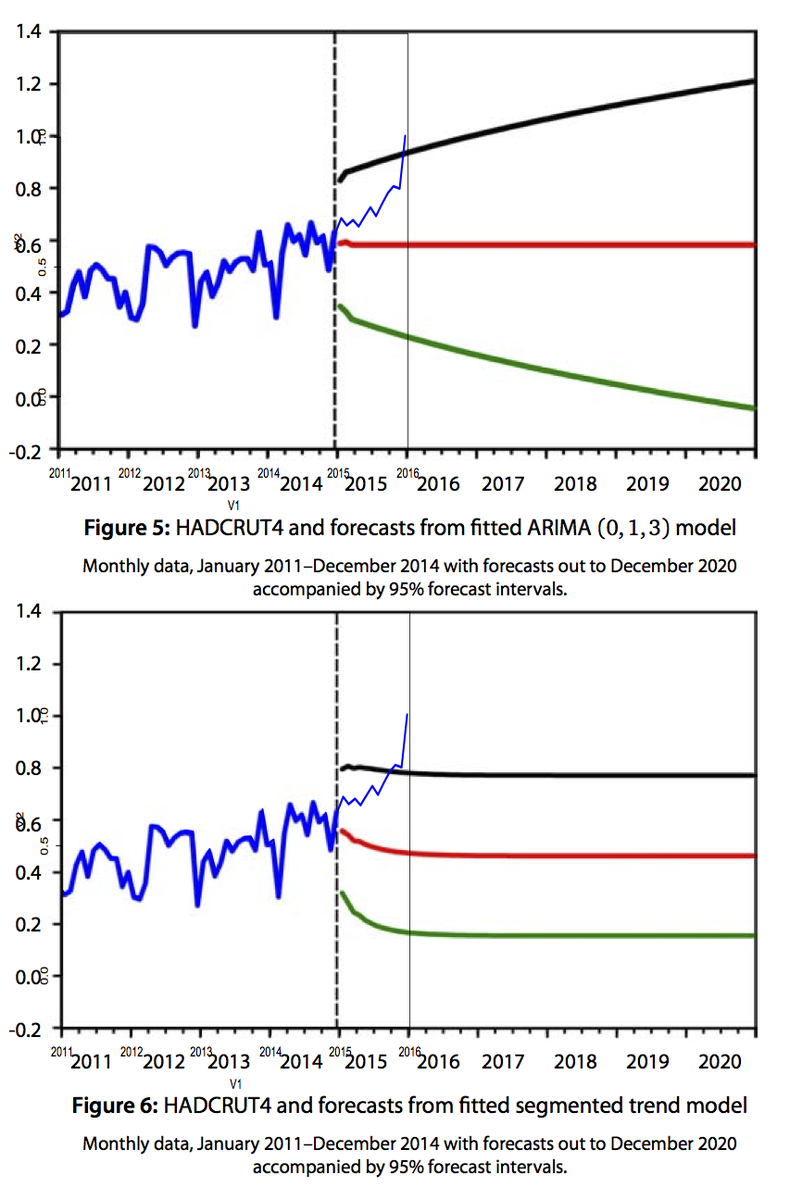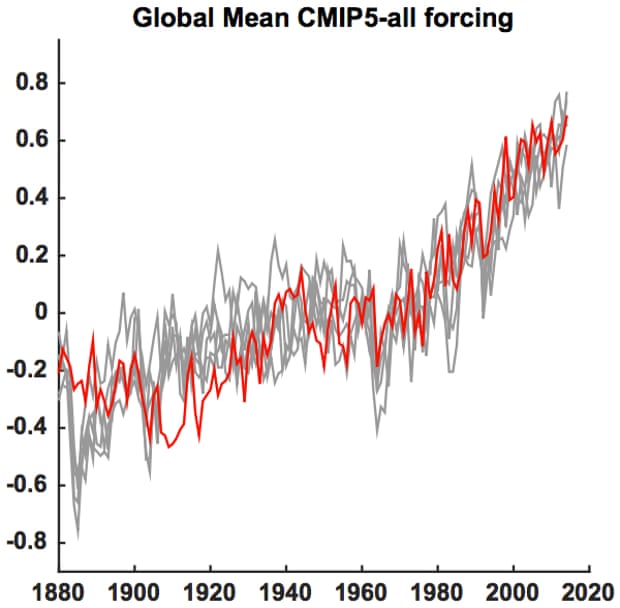
Climate models, and the predictions they make, are based on physics. We know how much more energy is trapped on Earth when we increase the greenhouse effect, and we have a good idea how much this trapped heat will warm the planet. We’ve understood these physical scientific concepts for over 150 years.
When climate contrarians make their own predictions, they tend to throw physics out the window. For example, as documented in my book and a paper I recently published with Rasmus Benestad and colleagues, contrarians have made climate predictions based on things like the orbital cycles of Jupiter and Saturn, ocean cycles and sunspots, and “natural fluctuations,” but they often completely disregard the basic, long-understood physics of the increasing greenhouse effect.
And so we have the latest such unphysical climate prediction, made in a report by Loughborough University statistics professor Terence Mills, on behalf of the anti-climate policy advocacy group, the Global Warming Policy Foundation (GWPF). The report essentially fits a statistical model to past global and local surface temperature changes, and then uses that statistical model to forecast future temperature changes. It’s an approach that’s been used to predict financial market changes, for example.
The obvious flaw in this application is that the Earth’s climate is a physical system, and the statistical model includes no physics whatsoever. You simply cannot accurately predict how a physical system will change if you ignore physics, like the increasing greenhouse effect. As DeSmogUK put it, the GWPF report predicts no global warming by ignoring the main cause of global warming. And as climate scientist James Annan wrote,
The basic premise is that if you fit a nonsense model with no trend or drift, you generate a forecast with no trend or drift (though with huge uncertainty intervals, necessary to allow for the historical warming we’ve already seen). Amusingly, even with those huge uncertainty intervals, the temperature is already outside them
Indeed, as NASA Goddard Institute for Space Studies Director Gavin Schmidt noted, temperatures have already risen outside of the GWPF forecasted range.

A number of other climate scientists immediately had a good laugh at the report’s and media’s expense.
Unfortunately, the seemingly juicy story nevertheless made the rounds in the conservative media, including the Times, the Australian (both Murdoch-owned),the Express, Canada Free Press, and the Daily Mail. At least the Mail called the report “controversial” and noted the mockery from climate experts, who called the GWPF report “silly” and “daft.” Climate scientists Emily Shuckburgh and Ed Hawkins even took the time to write a letter to the Times to correct the story.
James Annan used the opportunity to propose a modest wager based Professor Mills’ forecast. As Annan describes it,
There followed a fruitless exchange in which [Mills] declined to comment on whether he thought the forecast was credible and refused to even discuss any possible bet. I’m still baffled as to what might motivate a statistics professor to put their name to such obvious drivel, it’s hardly something that will enhance his reputation in the academic community, or that he can feel proud to have written.
As Mann et al. (2016) most recently showed, physics-based climate models are doing a very good job at predicting global warming and climate change. As expected based on our understanding of the greenhouse effect, if we keep pumping vast amounts of carbon pollution into the atmosphere, the planet will continue to warm dangerously rapidly.

Global mean temperature series (red) along with five different Monte Carlo surrogates based on forced signal + ARMA noise realizations (gray) using CMIP5 all-forcing experiments. Illustration: Mann et al. (2016)
Posted by dana1981 on Monday, 29 February, 2016
 |
The Skeptical Science website by Skeptical Science is licensed under a Creative Commons Attribution 3.0 Unported License. |